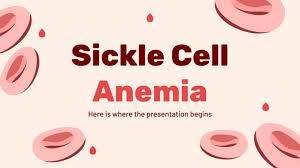For millions of people living with sickle cell disease (SCD), every day can be a struggle. The disease, a genetic condition that affects red blood cells, causes chronic pain, fatigue, and frequent medical complications. For many, it limits their ability to live life fully—children miss school, adults miss work, and everyday tasks can seem insurmountable. For generations, people with SCD have had to manage these symptoms without a true cure in sight. But now, thanks to a groundbreaking advancement in gene-editing technology, there’s finally hope.
Scientists have developed a new treatment using CRISPR technology that offers a potential cure for SCD by addressing the genetic mutation at the root of the disease. CRISPR, which allows precise editing of genes, repairs the faulty gene responsible for producing abnormal hemoglobin in people with sickle cell. In early clinical trials, patients who received the treatment showed dramatic improvements. They no longer experienced the debilitating pain crises that had defined their lives for years, and their red blood cells functioned normally again.
This breakthrough feels like a miracle for those who have lived with the burden of the disease. It’s a chance to live pain-free, without the constant fear of hospitalization or early death. It’s the promise of a life where children with SCD can play and dream freely, where adults can work and plan for their futures without worrying about their health. But this life-changing treatment comes with a catch: a $2.2 million price tag.
For most people living with SCD, particularly in African and other low-income communities where the disease is most prevalent, that price is impossible to afford. Even in wealthier countries, the cost raises difficult questions. How will families and patients be able to access this cure? Will insurance cover it, or will it be available only to the wealthiest patients? These questions weigh heavily on the minds of many families who have been waiting for a cure like this for generations.
The treatment’s high cost also points to a broader issue in modern healthcare: accessibility. While medical breakthroughs like this one represent tremendous progress, they can also deepen existing inequalities. For families already struggling with the costs of managing sickle cell disease—medications, hospital visits, and missed work—the idea of a cure that they can’t afford feels like a cruel irony.
There is hope that, in time, the cost of CRISPR-based treatments will come down. As with many new technologies, prices may drop as production scales up and more people receive the treatment. Advocacy groups, governments, and healthcare organizations are already pushing for ways to make the cure more affordable. Some suggest tiered pricing models, government subsidies, or insurance reforms to help bridge the gap.
For now, though, families are left in a painful limbo. They know that a cure is out there, but it feels just out of reach. The CRISPR breakthrough has given the world hope that sickle cell disease can be defeated, but it has also highlighted the urgent need for healthcare systems to ensure that this cure, and others like it, can be accessible to everyone—not just the few who can afford it.



No comments yet
Be the first to share your thoughts!